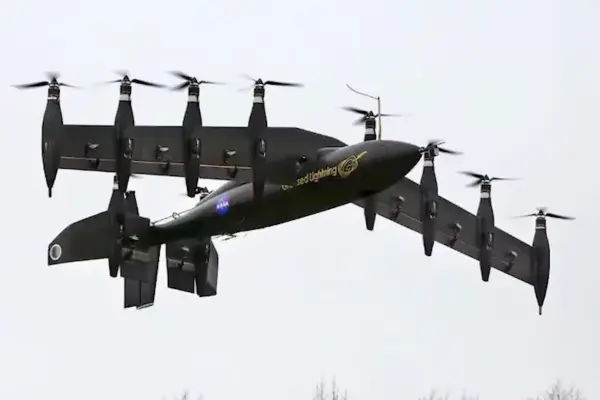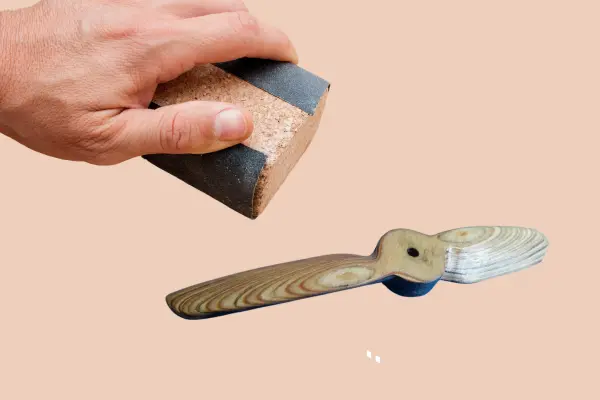Drones are really useful for lots of things, like taking pictures from the sky and mapping out areas. But there’s a problem they can be really noisy. This can be annoying, especially if you use your drone a lot. As someone who loves drones, I’ve noticed how loud they can be, especially models like the DJI Mavic Air. In this guide, we’ll talk about why drones are noisy and share some tips on how to make drone quieter, including techniques to reduce noise levels.
Why Drones Make Noise?

Drones make noise mainly because of how they fly. They use electric motors or engines to move in the air. The noise comes from the spinning propellers or the engine running. Also, the way drones are shaped can make them noisy when air flows around them, especially quadcopters. People try to make drones quieter by improving the motors and how they’re built, but noise is just part of how drones work. Plus, rules often say drones need to make sounds, like beeps, to help keep people safe when they’re flying.
How Loud Are Drones Actually?
The loudness of a drone can vary depending on several factors, like how big it is, how it’s made, and how it moves. Usually, drones can sound like a soft hum or a louder whine or buzz. Smaller drones with electric motors are usually quieter than bigger ones with engines that burn fuel, which can be really loud. Also, how high up the drone is and how far away you are from it can make it seem louder or quieter. Drones aren’t usually as loud as regular planes, but they can still make a noticeable noise, especially in quiet places or neighborhoods. People are trying to make drones quieter by finding better ways to power them and making them with parts that reduce noise.
How to Make Drone Quieter?
➡️Increasing the Number of Propellers

One effective strategy to reduce drone noise is to increase the number of propellers. Hexacopters and octocopters, with six and eight propellers respectively, are known for their quieter operation compared to quadcopters. NASA has even developed drones with eight propellers, significantly reducing noise levels during flight.
➡️Using Larger Propellers
Another approach to quieting a drone is to use larger propellers. Larger propellers produce lower-pitched sounds, which are less bothersome to the human ear. However, it’s important to make sure of compatibility with your drone model and avoid interfering with other components.
➡️Sanding Down Propeller Surfaces

Smoothing out the surface of propellers can also help reduce noise. Injection-molded propellers often have small imperfections that contribute to noise production. Using fine sandpaper to remove these imperfections can lead to a quieter flight experience.
➡️Utilizing Low Noise Propellers
Aftermarket low noise propellers are available for many drone models, including the DJI Mavic Air. These propellers are specifically designed to reduce noise while maintaining performance. When selecting low-noise propellers, ensure they fit securely onto your drone to prevent instability during flight.
➡️Exploring Sound-Absorbing Solutions
Companies like Dotterel offer sound-absorbing shrouds that can significantly reduce drone noise. These shrouds absorb sound frequencies generated by the drone and deflect noise upward, minimizing its impact on observers on the ground. Additionally, they enhance flight safety by reducing the risk of noise-related disturbances.
What strategies can be implemented to minimize the noise of drones during flight?
Making sure drones fly in the best paths can help make them quieter and cause less trouble for the area around them. By planning where they’ll fly and adjusting their routes carefully, important natural spots, and places where noise can be a problem.
One way to do this is to fly drones higher up in the sky. Up there, they’re not as loud, and they’re less likely to bother people or animals. By staying away from the ground, drones can make less noise while still doing what they need to do.
Also, using special settings that make drones quieter and use less power can help, especially in places where being quiet is really important. Some drones have options to change how they fly and how much power they use, so people flying them can pick the best settings for where they are.
By using software and tools like GPS and special programs for planning flights, people can figure out the best paths for drones to make less noise and not bother the environment. These tools show where to go and give feedback while flying, so people can make good choices and not cause problems with their drones.
Buy a Quieter Drone
The five quietest drones right now are the DJI Mavic 2 Pro, Autel Robotics EVO II, Parrot Anafi, Yuneec Mantis Q, and Holy Stone HS720.
Balancing Your Props
If your drone’s propellers aren’t balanced, they’ll make more shaking and noise when they spin. You can buy a prop balancer to help, or do it yourself by following these steps in this video:
What is the Importance of Quieter Drones?
The importance of quieter drones cannot be overstated, as they offer numerous benefits to various stakeholders. For residents, quieter drones mean less disturbance and annoyance, leading to improved quality of life. Wildlife can also benefit from reduced noise levels, as it minimizes stress and disruption to their habitats. Moreover, businesses and organizations operating drones in noise-sensitive areas can avoid legal complications and maintain positive relationships with the community by prioritizing noise reduction.
In addition to addressing immediate concerns, investing in quieter drone technology can pave the way for future advancements in the industry. By prioritizing noise reduction, manufacturers and developers can drive innovation and create more sustainable drone solutions. This not only benefits the environment but also opens up new opportunities for industries such as aerial photography, agriculture, and surveillance.
NASA’s Quieter Drone Technology
NASA has been at the forefront of developing quieter drone technology, particularly for applications such as package delivery. In 2015, NASA unveiled a drone with eight propellers, constructed from lightweight carbon fiber materials. This innovative design resulted in significantly reduced noise levels, making it ideal for urban environments where noise pollution is a concern.
Quiet Drones for Wildlife Photography
Many professional photographers and filmmakers rely on drones to capture stunning aerial shots of wildlife. Quieter drones, such as hexacopters with low-noise propellers, are preferred in these scenarios to avoid disturbing animals during filming. By reducing noise levels, these drones allow photographers to capture natural behavior without causing unnecessary stress to wildlife.
Conclusion
Making drones quieter is really important to make flying them better for everyone. By following the tips in this guide, like using more propellers, bigger propellers, smoothing out propellers, and using things to absorb sound, you can have a quieter and nicer time flying your drone. Share your own experiences and tips in the comments below, and keep an eye out for more helpful stuff about drones coming soon.
Frequently Asked Questions (FAQs)
1. Why are drones so noisy?
Drones produce noise primarily due to the rotational frequency of their propellers as they spin through the air. Additionally, factors such as drone design, propeller condition, and environmental factors can also contribute to noise levels during flight.
2. How can I make my drone quieter?
There are several strategies to reduce drone noise, including increasing the number of propellers, using larger propellers, sanding down propeller surfaces, utilizing low-noise propellers, and exploring sound-absorbing solutions such as shrouds.
3. Will increasing the number of propellers make my drone quieter?
Yes, increasing the number of propellers, such as using hexacopters or octocopters, can help reduce drone noise. More propellers distribute the workload more evenly, resulting in quieter operation compared to quadcopters.
4. Are larger propellers more effective in reducing drone noise?
Larger propellers generally produce lower-pitched sounds, which are perceived as less annoying. However, it’s essential to ensure compatibility with your drone model and avoid interference with other components.
5. How effective are aftermarket low noise propellers?
Aftermarket low-noise propellers are designed to reduce drone noise while maintaining performance. They can be effective in minimizing noise levels during flight, especially when properly installed and securely fitted onto the drone.
6. Can sanding down propeller surfaces really make a difference in noise reduction?
Yes, smoothing out the surface of propellers can help reduce noise by eliminating small imperfections that contribute to noise production. Using fine sandpaper to remove these imperfections can lead to a quieter flight experience.
7. Are sound-absorbing solutions like shrouds effective in reducing drone noise?
Yes, companies like Dotterel offer sound-absorbing shrouds that can significantly reduce drone noise. These shrouds absorb sound frequencies generated by the drone and deflect noise upward, minimizing its impact on observers on the ground.
8. Are quieter drones suitable for wildlife photography?
Yes, quieter drones, such as hexacopters with low-noise propellers, are preferred for wildlife photography to avoid disturbing animals during filming. By reducing noise levels, these drones allow photographers to capture natural behavior without causing unnecessary stress to wildlife.